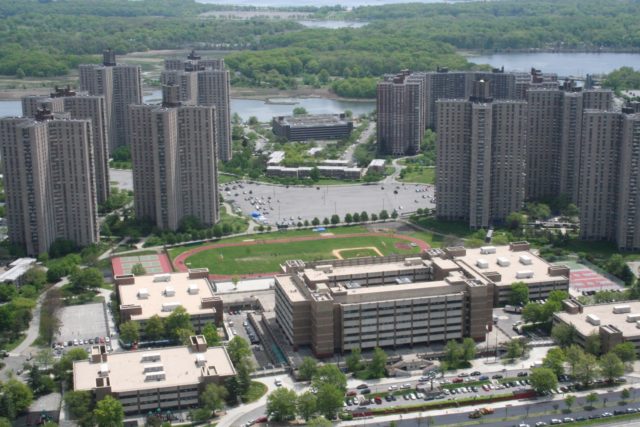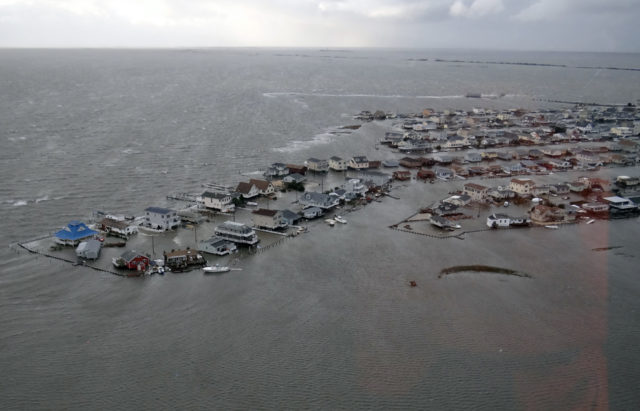Jason M. Barr July 1, 2019
Ingrid Gould Ellen is the Paulette Goddard Professor of Urban Policy and Planning at New York University, and a Faculty Director at the NYU Furman Center for Real Estate and Urban Policy. She is the author of Sharing America’s Neighborhoods: The Prospects for Stable Racial Integration and editor of The Dream Revisited: Contemporary Debates About Housing, Segregation and Opportunity.
On Housing Supply
JB: In your recent article, “Supply Skepticism: Housing Supply and Affordability,” in Housing Policy Debate, you discuss some of the reasons given by the opponents of new construction in large, older cities. Can you elaborate on some of them and the rebuttals you provide in the article? What does the evidence say about the relationship between housing supply and affordability?
IGE: While new developments have long faced opposition from NIMBY homeowners, who want to maintain their home values, the article highlights the opposition that now comes from renters and affordable housing advocates, who worry that new development will actually raise rather than lower rents and prices. This dynamic was on full display in the recent California debate on SB50, where some tenant advocates continued to oppose upzoning in transit-rich areas due to the perceived risk of displacement. Our article analyzes four commonly voiced arguments voiced by this new group of supply skeptics.
The first argument is that land in many high-cost cities is so constrained that any market rate housing will come at the direct expense of affordable homes. The second challenges the concept of filtering (the idea that new market rate housing causes other housing to filter to lower income households), maintaining that adding supply at the top end will do little or nothing to alleviate affordability challenges in lower-priced segments of the market. The third argument is that new housing will simply induce more demand and that any decreases in price resulting from additional supply will be fully offset. Finally, the fourth argument focuses on localized spillover effects and asserts new housing will increase rents and trigger displacement in the immediately surrounding neighborhood, even if it relieves price pressure across the metro-area.
Many of these arguments are plausible, but our review of the literature concludes that on balance, research suggests easing barriers to new construction make housing more affordable. That said, there are a number of research gaps. Most notably, we need more research examining how new market-rate developments affect prices and rents in the immediately surrounding neighborhood. There is some emerging research currently underway that should help to shed light on this question.
Finally, and importantly, we argue that allowing more new housing will not fully address affordability challenges; subsidies or other incentives are also needed to meet the housing needs of the lowest income households.
On Housing Supply and Governing
JB: Related to this, today, the realities of governing a city means that, frequently, good economics makes bad politics, and good politics is bad economics. For example, if a mayor proposes a large upzoning of a particular area to increase density and housing affordability, it’s likely to be shot down. It seems to me that if researchers want to have more say in the local, state, and regional policy process, they need to offer policy solutions that consider the challenging political realities that motivate mayors and local officials. A lot of social science and economic research has shown that restrictive zoning raises housing prices; but the policy implication that city governments should just go ahead and loosen zoning restrictions is not helpful for a mayor worrying about re-election. What are your thoughts on this?
I think it’s helpful to emphasize the need for balance in local housing policy. Reducing barriers to new supply is critical, but such efforts should be paired with efforts to create and preserve subsidized housing, to help households access and afford private-market homes and to protect against displacement. Such balanced approaches are not only likely to be more effective in addressing affordability challenges, but are also more likely to garner political support from the wide coalition of interests needed to advance desired policy changes.

On Cities and Climate Change
JB: You’ve done research on the effects of Hurricane Sandy on New York’s economy. Can you describe some of this research and your findings?
IGE: I’ve been collaborating with Rachel Meltzer and Xiaodi Li on a set of papers about the impacts of Hurricane Sandy on local businesses and real estate markets. Our paper on local businesses finds that Sandy had a significant and persistent effect on neighborhood establishments, particularly small retailers with a more local customer base. After Sandy, retail establishments exposed to higher storm surge flooding experienced larger losses in jobs and sales revenues compared to retail establishments with no or little exposure to inundation. We also see evidence that retailers exposed to high levels of flooding were more likely to close.
In our second paper, we examine effects on local real estate markets. Our preliminary results indicate that property prices fell after the storm, but price declines were concentrated among properties directly physically damaged and their immediate neighbors. Properties in the flood zone that saw little damage from the storm saw little change in price, suggesting that homebuyers did not change their global assessment of risk for flood prone areas. Further, properties in higher income neighborhoods experienced smaller price discounts and recovered more quickly compared to those in lower income areas.
On Climate Change and Urban Resilience
JB: Going forward, what do you think cities can do to be more resilient to better withstand sea-level rise and storm surges? And how can these policies be enacted without placing an undue burden on residents, who already have high housing and living expenses? What are your thoughts on Mayor De Blasio’s plan (adapted from former Mayor Bloomberg’s plan) to build a “Seaport City,” expanding Manhattan through infill into the East River?
IGE: Climate change is an enormous challenge for coastal cities, and there is no silver bullet, especially in dense urban areas – we can’t just put skyscrapers on stilts. Certainly we shouldn’t ask taxpayers to shoulder the risk of building of homes in flood zones, as is our current model under the national flood insurance program. And we should probably subsidize efforts to make existing buildings throughout the city more resilient. It’s quite likely that more sweeping efforts will also be needed to protect cities from flooding, such as building seawalls or dikes that can protect neighborhoods from surging waters. Some creative designers have come up ideas for building landscaped hills that not only shield cities from floods during storm but also serve as recreational spaces.

On the Future of Large Cities
JB: In a recent op-ed on Bloomberg.com, the economist Tyler Cowen offers a rather bleak prospect for the large cities like New York, and San Francisco. His basic argument is that in a city with two groups–renters and owners–the owners push restrictions on new construction to increase their property values, while the renters are reluctant to push for urban improvements in infrastructure and services because they would just wind up increasing their rents (and benefiting property owners). His conclusion:
In a NIMBY-controlled world, many of our most glorious cities will slowly but surely fall apart. Voters just won’t care enough about the quality of public services, and furthermore many voters might end up using their votes to express their ideology (even more so than usual) rather than to elect leaders to solve problems….. If America’s cities continue to deteriorate in so many areas, the social costs of building restrictions and high rents will spread — even to the most development-friendly parts of America and the world.
Would you like to offer any thoughts or a rebuttal on this? Is the future of New York a return to the 1970s?
IGE: I’m less pessimistic. Over the past decade or two, we’ve seen a growing share of college-educated adults choose to live in downtown areas. There’s some debate about the underlying causes. In work with Keren Horn and Davin Reed, we argued that part of the story is declining crime. Others have pointed to long work hours leading to a desire for shorter commutes, while others have highlighted a growing taste for urban amenities. But whatever the cause, I don’t expect that we will see the kind of suburban flight that characterized U.S. cities during the 1970s. And the quality of life in U.S. cities today is dramatically improved from what it was in that decade. Streets are safer, parks are nicer, and fiscal outlook is far better.
I worry more about the consequences of rising rents, which threaten to price out all but high-income households in many of our cities and undermine the very diversity that makes cities so vital. So, we certainly need to continue to push for an ample supply of housing, serving a range of incomes.
Continue reading Part I of this Q&A Interview with Ingrid Gould Ellen here.